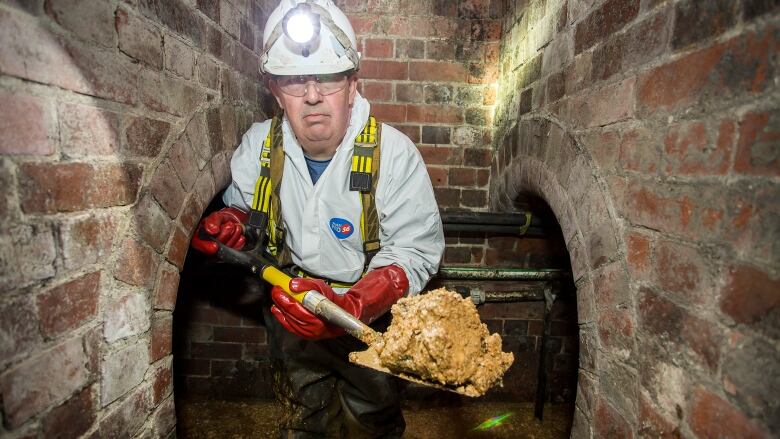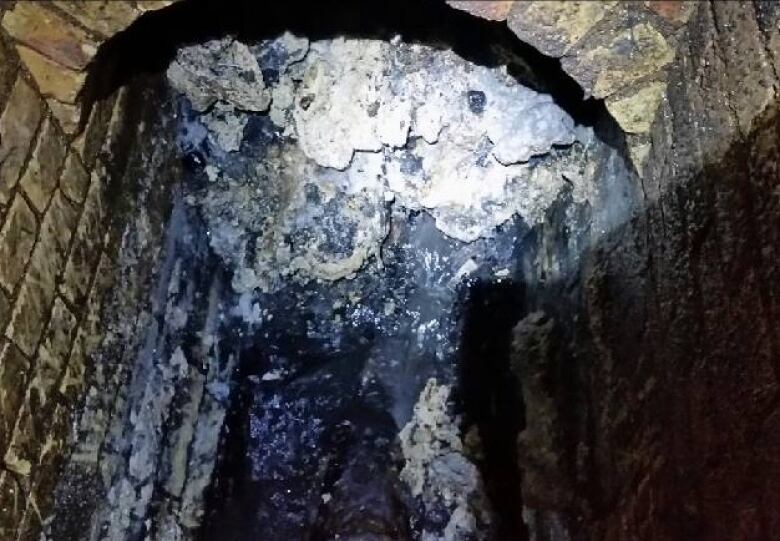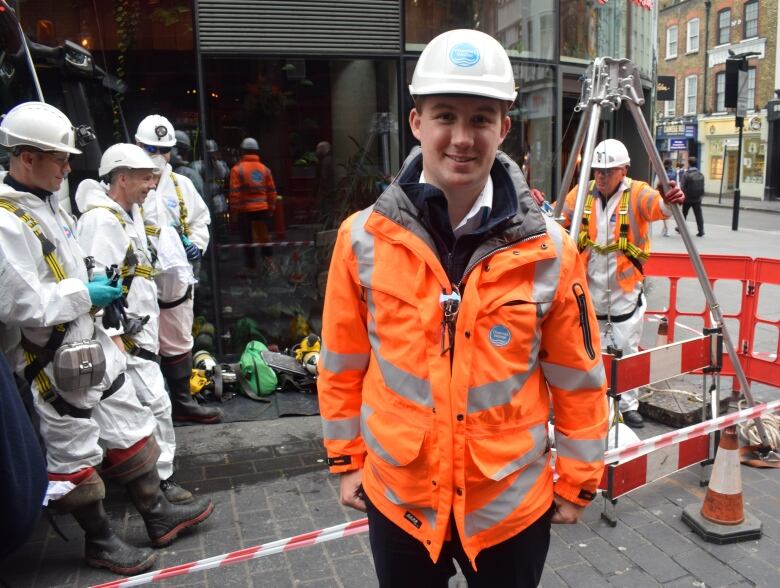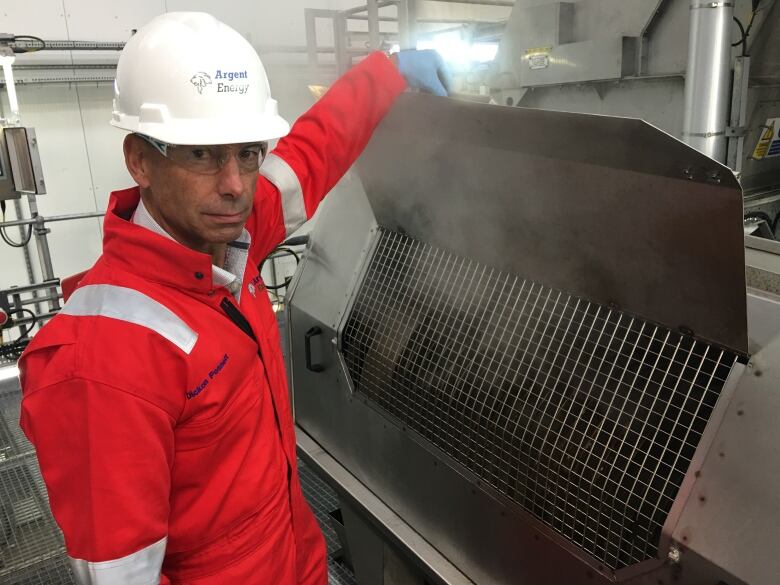How crews are busting congealed blobs of fat in London sewers and turning them into fuel
Victorian-era sewer system can't cope with 'pressures of modern living'

In London's 19th-century sewers, crews in coveralls are waging a 21st-century battle. They're blasting away a monster that feeds on grease and garbage, and its name reflects the beast's potency for revulsion: Fatberg.
The monstrosity a foul-smelling, congealed mass of grease, oil, fat and garbage is born innocently enough. Londoners flush away wet wipes, diapers or condoms. They pour grease down the kitchen sink. And in a city of 8.7 million, the Victorian-era sewers can't cope.
"The Victorians built a really good sewer network for us," said Alex Saunders, waste network manager for London's water treatment utilityThames Water, standing near a crew battling a fatberg in the city's Chinatown.
But, he adds, "the pressures of modern living, with our fatty diets, the takeaway [food], combined with things like wet wipes, that's what causes the really big problem."
Biggest fatberg of them all

Though the congealed blobs have appeared in other cities' sewers, London water treatment crews were the first to come up with the name "fatberg."
Thames Water deals with hundreds of blockages daily, but none like the recent Whitechapel fatberg, named after the neighbourhood in East London. The 132-tonnehard blob blocked the sewer and damaged its walls. Thames Water estimated its length at 250 metres "longer than two Wembley football pitches," the company said.
Workers spent nine weeks this fall in the hot, smelly sewer breaking it up using high-pressure jets. Crews equipped with hardhats and facemasks worked in what the company described as "cramped and extremely challenging conditions" in Whitechapel's metre-high, egg-shaped sewer.
"It's quite humid down here, it's quite sweaty and warm," saidThames Water field operations manager NatalieStearn.
She acknowledges that the smell "gets to you after a while."

Wearing protective gloves and holding a chunk of dark greyish brown fatberg in her hands, Stearn describedit as having a chalk-like consistency. "It's just a solid block."
The increased prevalence of the blobs has forced Thames Water to come up with ways to prevent them from happening in the first place.

The company has been working with restaurants that cook with a lot of grease to remind them to collect it and throw it out, rather than dumping it down the drain. It has also instituted a campaign "Bin it, don't block it" asking Londoners to help prevent fatbergs.
Thames Water has come up with an easy way to remember whatshouldbe put down the drain only the "three P's."
That's "pee, poo and toilet paper."
'A second chance'

So what do you do with tons of fat and waste when it does clog the drains?
Once broken up and sucked out of the sewers, the bits of afatberggenerally endup in landfills. But that's changing.
Some from Whitechapel and elsewhere in the city are pumped into trucks, then taken four hours northwest of Londonto Argent's plant in Ellesmere Port, England.There the renewable energy producer is turning the wretched blobs into biofuel.
"It's really hard to handle because everything that's in it has to be taken out," said Dickon Posnett, the company's director of corporate affairs.
A filtration process removes the solids and brings the remaining putrid liquid to a boil. Less than 40 per cent of the original fatberg's mass will be kept to the end of the process. The rest will be dumped into a landfill.

"The fat itself is pretty poor, rancid quality," Posnett said, "so the technical bits later in the process have to work hard to turn it into a useful oil."
Some of the biodiesel is blended with traditional diesel and sold as a finished product (the commercial blend is usually 20 or 30 per cent biofuel). The process, from the fatberg's arrival at the plant, to its conversion to blended biodiesel, can take up to six days.
Some fuel is trucked back to London to power the city's iconic double-decker buses. Thames Water estimated the Whitechapel fatberg alone would be converted into 10,000 litres of biofuel enough to power 350 buses for a day.
"What's really nice," Saunders, the waste network manager, said, "is we're giving these fatbergs a second chance."













_(720p).jpg)


 OFFICIAL HD MUSIC VIDEO.jpg)
.jpg)



























































































